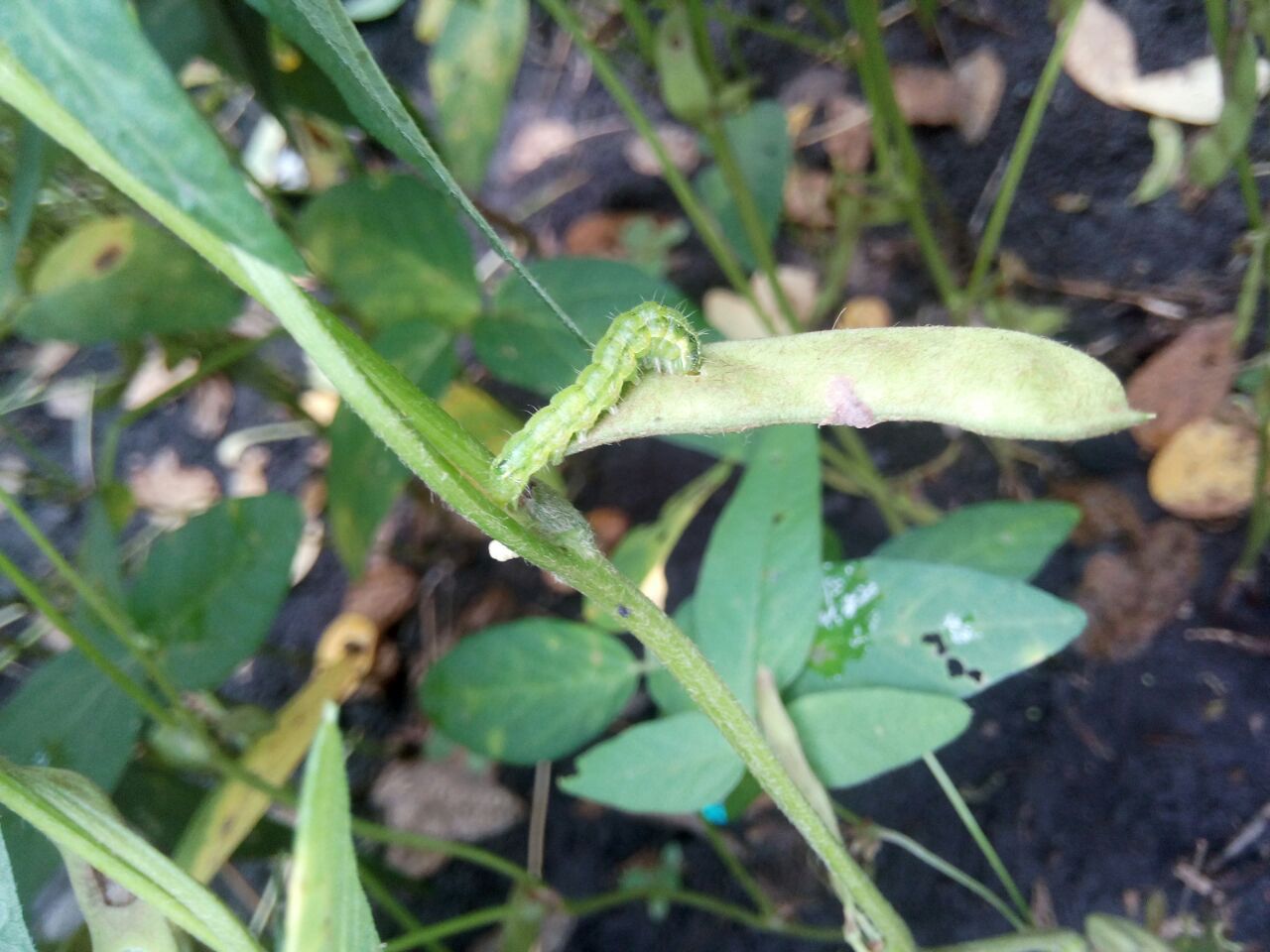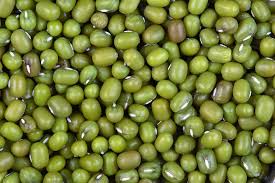- Its larvae feed on the chlorophyll by scrapping the leaves of soybeans, which causes white yellow netting on the affected leaves.
- In light soil larvae can damage the roots, during the day they usually hide on the lower surface of the soybean leaves or in the soil around the base of the plant.
- After excessive damage on the leaves, they begin to eat the buds, flowers, and pods of soybean, leaving only the stems on the plant.
- PROFENOFOS 40 % + CYPERMETHRIN 4% EC @ 400 gram / acre or EMAMECTIN BENZOATE 5% SG @ 100 gram / acre or FLUBENDIAMIDE 20% WG @ 100 gram / acre or CHLORANTRANILIPROLE 18.5 % SCl 18.5% SC @ 60 ml / acre or NOVALURAN 5.25 %+ EMAMECTIN BENZOATE 0.9 SC @ 600 ml / acre.
- As biological treatment Bavaria Basiana @ 250 gram / acre
How to Take care of insect pests & diseases at bud initiation stage of mungbean
-
- Pest and disease control is also important if one wants to achieve high production.
- The loss in the production caused by pest and diseases may reach up to 70% depending upon the severity of the attack.
- In the summer season, During bud initiation, mungbean may be infested by pod borer, tobacco caterpillar, etc.
- Mung bean, just like any other legume crop, it is highly susceptible to diseases caused by fungi, bacteria, and viruses. On different growing stages of leaves, stems and roots symptoms can be seen like yellowing, blight and root rot.
- For Pest control Monocrotophos 36% SL @ 300 ml/acre, Emamectin Benzoate 5% SG @ 100 gm/acre (for Gram pod borer) and Flubendiamide 20% WG @ 100gm/acre OR Indoxacarb 14.5% SC @ 160-200ml/acre (for tobacco caterpillar).
- For Disease control, use carbendazim 50% WP @ 300 gram/acre (for blight) and Thiophenate Methyle 70% WP @ 250-300 gram/acre.
Like and share with other farmers by clicking on button below.


